Epalzeorhynchos frenatum
Rainbow Shark
SynonymsTop ↑
Labeo frenatus Fowler, 1934; Epalzeorhynchus frenatus (Fowler, 1934); Labeo erythrura Fowler, 1937
Etymology
Epalzeorhynchos: From Epalzeo-, which has an unconfirmed derivation and meaning but is often reported incorrectly to denote ‘curative’ (it may actually mean ‘horn’ in reference to a cone-shaped protuberance on the snout of Epalzeorhynchos spp.), and the Ancient Greek ρυνχος (rhynchos), meaning ‘snout, beak’.
frenatum: from the Latin frenatus, meaning ‘bridled’, in reference to the conspicuous black “bridle-like” band extending from the snout to the eye.
Classification
Order: Cypriniformes Family: Cyprinidae
Distribution
Reportedly native to Thailand, Laos and Cambodia and was once widespread particularly in Thailand where it’s been recorded from the Mae Klong, Chao Phraya and Mekong river basins with occurences in the provinces of Chiang Mai, Phrae, Phitsanulok, Nakhon Sawan, Chainat, Kanchanaburi, Phra Nakhon Si Ayutthaya, Nakhon Ratchasima and Ubon Ratchathani.
Type locality is ‘Chieng Mai [Chiang Mai], northern Thailand’.
Laos populations are restricted to the Mekong drainage both above and below the Khone Phapheng Falls including the lower Xe Bangfai, which was one of the few remaining pristine rivers in Laos before being dammed in 2009/10. In Cambodia it supposedly occurs in the lower Mekong at least as far downstream as the capital Phnom Penh and has also been collected from the Tonlé Sap system, although these records may refer to E. munense.
The true extent of its current distribution is unclear as many populations have dwindled in numbers or even vanished completely over the last few decades. Reports suggest it hasn’t been seen in the upper Mae Klong river within the last ten years, for example. There also exist incongruent opinions regarding its range with Yang and Winterbottom considering it restricted to the Mae Klong and Chao Phraya watersheds, being replaced by E. munense in the Mekong, whereas Kottelat (1998) reports it from the lower Xe Bangfai in the middle Mekong.
While overfishing for the aquatic trade has been widely blamed for its demise there exists no evidence to support this and instead it’s probable that large scale environmental change such as damming of major rivers and draining of swampland have interfered with its breeding cycle. Wild examples are almost certainly unavailable in the aquatic trade with 100% of those seen on sale likely to originate from commercial farms in Thailand and other countries.
Habitat
Has most often been observed grazing sandy or rocky substrates in streams and rivers and is known to move into seasonally inundated floodplains or forested areas during the wet season. It is these migratory patterns that are thought to have been disrupted by human development.
Maximum Standard Length
130 – 150 mm.
Aquarium SizeTop ↑
An aquarium with base measurements of 120 ∗ 45 cm should be the smallest considered for a single specimen, with larger quarters necessary for a group.
Maintenance
Provided sufficient cover is available this species is relatively unfussy in terms of décor, and should not harm softer-leaved plants. However it will thrive in a set-up designed to resemble a flowing river with a substrate of variably-sized rocks, gravel and some larger, water-worn boulders.
This can be further furnished with driftwood roots and branches plus aquatic plants from genera such as Microsorum, Bolbitis or Anubias which can be grown attached to the décor. Bright lighting will promote the growth of algae and associated microorganisms, upon which the fish will graze.
Like many fishes that naturally inhabit running water it’s quite intolerant to the accumulation of organic wastes and does best if there is a high level of dissolved oxygen and moderate water movement.
Water Conditions
Temperature: 20 – 26 °C
pH: Happy within the range 6.5 – 8.0 but a value close to neutral is usually recommended.
Hardness: 36 – 268 ppm
Diet
Primarily an aufwuchs grazer feeding on algae, small crustaceans, insect larvae, etc., and for it to develop its best colours and condition it should be offered regular meals of small live and frozen foods such as chironomid larvae (bloodworm), Daphnia and Artemia along with good quality dried flakes, granules and fresh plant material.
Shelled peas, cucumber, blanched courgette, spinach and chopped fruit all make good additions to the menu. Once settled it will often ascend into midwater to feed and browse the biofilm that tends to form on rockwork and other solid surfaces.
Behaviour and CompatibilityTop ↑
A slightly better choice for the community tank than E. bicolor but tankmates must still be chosen with care.
While small specimens tend to hide away much of the time they become increasingly territorial as they grow and can display particularly high levels of aggression towards similar-looking species.
Some individuals may be more belligerent than others and there exist reports of apparent alliances with other species such as Chromobotia macracanthus. We’re unsure if these behavioural differences are indicative of gender but at any rate loaches from the genera Chromobotia, Botia, Syncrossus and Yasuhikotakia do seem to be left in peace by Epalzeorhynchos species whereas congenerics and members of Crossocheilus, Garra and Gyrinocheilus, for example, tend to be attacked constantly. Please note that in terms of the loaches not all may be housed together and proper research is essential.
Other bottom-dwelling fishes including cichlids and most catfish are best avoided as they may too be picked on. For the upper levels choose robust, active, schooling cyprinids. Ideally the Epalzeorhynchos should be the final addition to the tank in order to avoid it claiming ownership of the entire space.
This species probably lives a solitary lifestyle and in nature would probably have only come into contact with others of its own kind infrequently and during the spawning season. These instincts heighten as the fish get older and we therefore recommend it be kept singly in the majority of cases. In a very large tank with lots of cover a cohabitation attempt might be possible but each individual is likely to require a territory with a diameter of at least a metre.
Sexual Dimorphism
Sexually mature females are noticeably thicker-bodied than males but it’s impossible to sex juveniles accurately. Males should also exhibit a dark marginal edge to the anal fin.
Reproduction
As far as we know it’s not been bred in private aquaria but large numbers are farmed for the ornamental trade with the aid of hormones.
NotesTop ↑
Despite its popularity as an aquarium fish this species is rarely maintained in ideal conditions. Juveniles are typically being offered for sale with little to no information regarding temperament, eventual size, and potential age in excess of 15 years.
It’s also often sold as an algae-eater and while it does browse on algae it does not do so with the same efficacy as some Crossocheilus species, for example, and there’s little worth in purchasing it with that purpose in mind.
Some forms of the species are very colourful, one of which described as Labeo erythrura by Fowler (1937), that name now a junior synonym of E. frenatus. These tend to have more colour on the body and very bright, uniformly red finnage whereas others can exhibit varying degrees of dark pigmentation in the fins.
The ornamental albino variant is widely-available and has become extremely popular in the hobby and there is a commercially-produced anerythristic (lacking red pigment) mutation that has pale yellowish fins and has sometimes been misidentified as E. munense. Also worthy of note is that the specific name is sometimes misspelled ‘frenatus‘.
Most members of Epalzeorhynchos were formerly regarded as Labeo spp. and are thus referred to as such in older literature. According to Rainboth (1996) they are characterised by absence of a dorsal spine, possession of 10-13 branched dorsal fin rays, a thin membrane connecting the upper and lower lips and rigid, freely moveable rostral lobes.
Epalzeorhynchos itself has undergone some quite recent changes with a handful of species having been reassigned to Crossocheilus and E. bicornis moved to the new genus Akrokolioplax (Zhang and Kottelat, 2006). The latter was erected on the basis of differences in oral morphology and the position/structure of the so-called ‘rostral lateral lobes’ on the snout, a feature unique to these two genera.
Of the remaining species E. frenatum and E. kalopterus have been mainstays of the aquarium hobby for many years while the identity of E. munense now appears established. Smith (1934) described it as possessing a brown body, black dorsal fin edged in white and a white caudal fin, with type locality given as the Mun/Moon river, a tributary of the Mekong in eastern Thailand.
Fish collected since are similar in appearance to E. bicolor and E. frenatum, but distinguishable by a unique combination of black head, body and anal-fin, red caudal and dorsal fins, and black margins on the pelvic and pectoral fins (Kottelat, 1998).
These features have been recognised by several authors who also noted that preserved specimens tended to lose the red pigmentation in the fins after three months in alcohol and that the holotype of E. munense had been collected eight years prior to its description, thus meaning live colouration was not included. The possibility that E. frenatum and E. munense have hybridised in aquaculture at some point cannot be discounted.
Some SF forum members keep/have kept a fish which closely resembles E. bicolor but possesses a white caudal fin and is most often found among batches of E. frenatum. It is unclear whether this is a genetic sport among farm-bred fish or a potentially undescribed species but certainly the white pigmentation does not alter with age or conditioning.
References
- Fowler, H. W., 1934 - Proceedings of the Academy of Natural Sciences of Philadelphia 86: 67-163
Zoological results of the third De Schauensee Siamese Expedition, Part I.--Fishes. - Kottelat, M., 1998 - Ichthyological Exploration of Freshwaters 9(1): 1-128
Fishes of the Nam Theun and Xe Bangfai basins, Laos, with diagnoses of twenty-two new species (Teleostei: Cyprinidae, Balitoridae, Cobitidae, Coiidae and Odontobutidae). - Kottelat, M., 2013 - The Raffles Bulletin of Zoology Supplement 27: 1-663
The fishes of the inland waters of southeast Asia: a catalogue and core bibiography of the fishes known to occur in freshwaters, mangroves and estuaries. - Rainboth, W. J., 1996 - FAO, Rome: 1-265
Fishes of the Cambodian Mekong. FAO Species Identification Field Guide for Fishery Purposes. - Yang, J.-X. and R. Winterbottom , 1998 - Copeia 1998: 48-63
Phylogeny and zoogeography of the cyprinid genus Epalzeorhynchos Bleeker (Cyprinidae: Ostariophysi). - Zhang, E. and M. Kottelat, 2006 - Zootaxa 1225: 21-30
Akrokolioplax, a new genus of Southeast Asian labeonine fishes (Telesotei: Cyprinidae).
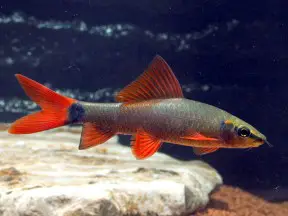
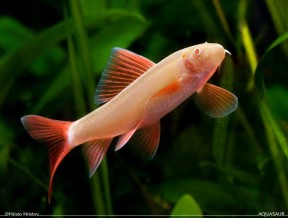

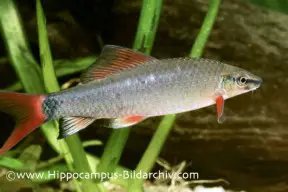
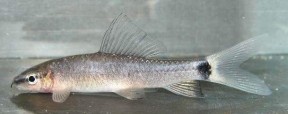
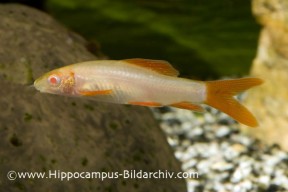
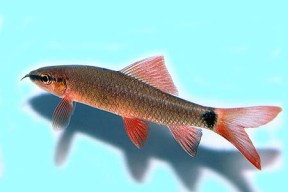

December 7th, 2013 at 5:48 pm
Considering how active and shooling (at least 5-6 specimens is best to keep together) this species is, at
least 180 cm long tank should be necessary for thriving these fish.
July 30th, 2014 at 5:12 pm
Aquarium size now updated, apologies for missing this earlier.